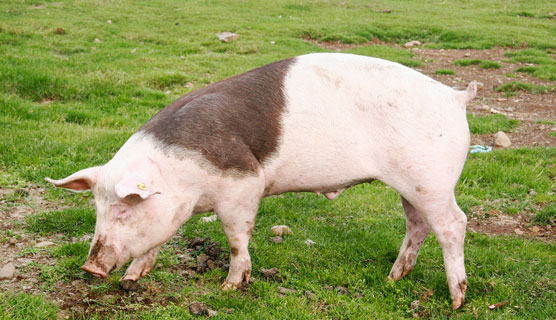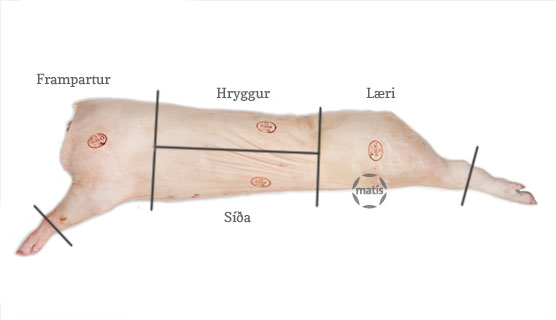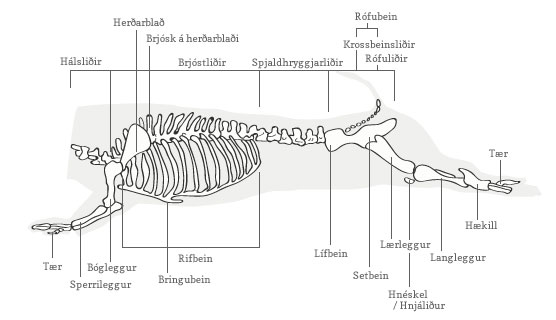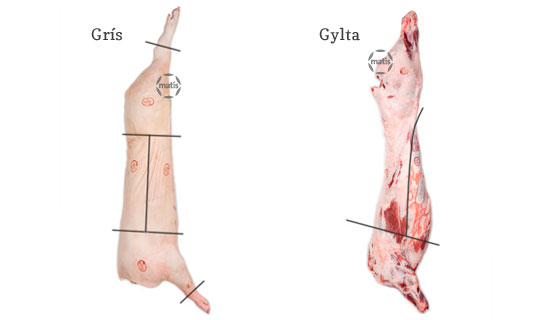Pork

| 2010 | 2011 | |
| Producers | 15 | 15 |
| Meat productionĀ Ā (t) | 6158 | 6044 |
| Quantity of feedĀ Ā (t) | um 27.000 | um 27.000 |
| Number of sowsĀ | 3615 | 3619 |
It is considered certain that the settlers had moved pig with them to Iceland and the pork had been one of the main foods of the population at the time, partly due to the high fertility of the animals. When the weather was cooled, vegetation and grain production felled down, it came down on the pork farming that was shut down in the 16th century. In the middle of the 19th century the farming started again on a small scale, partly with the aim to increase the variability in food products and the economy. For the breeding pigs where imported from Denmark and other neighboring countries.
Nearly 30 thousand tons of feed
About 80 thousand pigs are slaughtered annually, about 35 thousand pigs in pig slaughterhouses in the country (piglets, sows and barks). Feeding pigs consisting of wheat, barley, soy meal, fish meal, fat, oil, and a vitamin mixture. The use of grain to feed livestock was in total 68,000 tons in 2008. About 53,000 tons were imported that year, or about 80 % of total use. Most was imported of maize and wheat.
Protein and fat in the diet of pigs
Growing has grown tremendously in the last 15 years. It is mainly because of three reasons, first the weather conditions become more favorable, selective breeding has developed rapidly, and third, the development of the price of imported grain led to increased cultivation. Despite improved conditions, the quality of production varies.
Opportunities in Icelandic Farming
Icelandic pig farmerā€™s opportunities lie in the potential use of domestic fodder to ensure cleanliness of the production and healthy products, while ensuring the welfare of animals and the production facilities and are in harmony with the environment. One element in ensuring the safety of products is to establish origin labeling pork. Consumers want and have a right to know the most about the origin of the goods they buy.
Icelandic pig slaughterhouses have received EU authorization. Little or nothing is moved out of pork and what has been shipped out has gone on the markets in Asia and Russia, where the requirements are less strict than in the EU. From 1 November 2011, all slaughterhouses in the country shall meet the EU rules under the Act. 143/2009.



